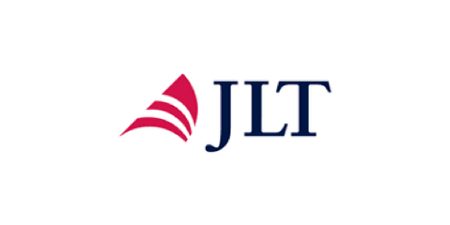
Industry:Insurance
Region:Asia Pacific & Japan
Client:Jardine Lloyd Thompson India (JLT India)
JLT India Reduces Costs While Simultaneously Increasing Productivity by 350% Deploying UiPath Robots

350%
Hike in efficiency
>99.5%
Accuracy for processes
21
Robots in production
27
Robots in process
Client Overview
Jardine Lloyd Thompson India (JLT India), a subsidiary of British MNC Jardine Lloyd Thompson (now a part of the Marsh and McLennan Group), is one of the leading global providers of insurance and risk management brokerage and associated services.
JLT India was looking at leveraging technology to improve customer experience, contain costs and improve efficiency for their offshore operations in India.
They wanted to implement automation for enhanced employee productivity, higher accuracy, process efficiencies, and resource rationalization. By deploying the UiPath Platform, JLT India has achieved marked improvements in efficiency, quality control accuracy, and scalability.
Jardine Lloyd Thompson India (JLT India), a subsidiary of British MNC Jardine Lloyd Thompson (now a part of the Marsh and McLennan Group), is one of the leading global providers of insurance and risk management brokerage and associated services. With three principal lines of businesses, Insurance Broking, Reinsurance, and Employee Benefits JLT boasts of a market capitalization of over £2.8 billion. JLT’s revenue for the year 2018 was at £1.45 billion, an increase of over 5% from 2017. JLT has 10,000 employees globally and is operating in over 40 countries.
JLT India is an offshore shared service center located in Mumbai and Pune, providing a variety of services to all three key businesses.
Embarking on the robotics journey
Globally, organizations are turning towards automation to achieve better responsiveness, much-improved customer experiences, cost optimization, employee productivity, and resource rationalization. In the year 2016, JLT India started pondering over how to leverage technology to deliver much-improved customer experience, consistently great quality outputs, contain cost and improve the effectiveness of their offshore operations. The idea of experimenting with robotic process automation (RPA) sparked when the company’s Director of Operations was introduced to such technologies at their very nascent stage at a NASSCOM conference. It caught his attention and he immediately decided to take it up.
It was logical to start with Employee Benefits. The business had already matured to end-to-end processing of work from India, and had adequate volume of manual repeatable tasks. Also, when we evaluated the systems and applications, they were suitable for RPA
Nitesh Rungta • Head of Digital Solutions at JLT India
The next step was the identification of the right partner and the processes for us to start this initiative. From the outset, JLT India was quite clear about which processes they wanted to automate, despite the complexity of what they were going to embark on. They decided to automate the Employee Benefits processes, as it had a high degree of repeatable processes, reasonable levels of sophistication, and used a range of systems where transposing similar data across systems caused inefficiencies and consumed labor hours.
UiPath was a credible, willing and a true partner
Once the business problem was identified, the next step was to find the right technology and partner. At the proof of concept (PoC) stage, JLT India evaluated various available options based on key parameters. "We assessed the top three RPA vendors in the industry. The verdict was in favor of UiPath, once we learned in-depth about the UiPath Platform, the simplicity of getting started, the ease of use and multiple other strengths” says Nikhil Kolthankar, Manager, Digital Solutions at JLT India.
There were multiple factors for going with UiPath. Aspects such as open architecture, ease-of-use and simplicity of the product were unique to UiPath at the time. Our initial pilots proved that we could hope to get some of our best Subject Matter experts to build robots, rather than having to hire an army of technologists, and write copious requirements documents. This is what has resulted in the success of our RPA implementation largely. Moreover, the commercial proposition was most suited to our needs, and the innovation roadmap excited us. Above all, we were impressed with the enthusiasm of the UiPath management and team who were always available, and helped us through our journey.
Ravi Gupta • Director of Operations, JLT Employee Benefits
UiPath proactively bridged all gaps during implementation. Whether it was the technical know-how or the implementation, or training, everything was handled without having to ask for it. Although the process is run entirely by an in-house team, the consulting and support knowledge board is provided by UiPath and its certified developers. “UiPath offered customer services as well as support. This made it easy for us to gather speed and speed up the implementation process.”
The rough and tumble of the initial phase
The whole deployment process had its ups and downs and was a long learning curve. This coincided with the period where the industry was evolving as well, from a stage where there were no real experts in the RPA space.
That was the point when we decided to start afresh. We went back to the drawing board and decided to work on one process at a time. By the end of 2017, we discovered the model that worked. After that, there was no looking back. Currently, we have automated 21 processes and process many thousands of work items via RPA. This currently translates into the work of about 60 staffers on the ground
Bhavesh Naik • Manager, Digital Solutions
By the third quarter of 2016, JLT India had its first deployment report ready. It went well. However, later it faced particular challenges due to the instability of the robot. Cases lined up as they were not getting processed fast enough. The year 2017 was mostly spent experimenting with various iterations and problem-solving issues. The lowest point of the program was when the company almost curtailed the initiative-it was not delivering expected outcomes.
UiPath helped JLT India improve efficiency, accuracy and scalability
The UK-based Employee Benefits administration, which is run from the India offshore facility of the company, deals with pension schemes.
We always wanted to have the capability to scale up without a linear increase in the workforce. The addition of RPA licenses or robots is very flexible. It saves recruitment time, training time and time to competency. Once the robot builds capability and gets trained, it becomes a perpetual asset.
Niladri Chatterjee • Leader, JLT India Employee Benefits
A typical transaction took around 30 minutes. However, with the deployment of RPA, this has come down to just eight minutes, which is a 350% improvement in efficiency.
Quality control and accuracy has also gone up from 98% to over 99.5%, due to the elimination of a large number of manual, error-prone steps conducted by humans. This has ensured consistent accuracy of work without large investments in trainings and system improvements.
Another benefit has been scalability. The function often sees sudden, non-linear spikes in volumes, which impacts turnaround times due to the inability to hire and train staff quickly enough. The large-scale deployment of RPA across multiple work-types and clients smoothens the impact of volume increases, and optimizes resourcing needs.
The road ahead looks promising
JLT India is looking to continue to leverage robotics for further enhanced efficiencies and service levels, while freeing up staff for taking on higher value-added activities.
JLT wants RPA to be the technology which differentiates their proposition to its customers over their competition. The benefit RPA can provide are faster incubation times due to generic processes that can be deployed on a new client immediately, service levels that are agnostic of volumes, and consistent quality of output.
It also wants to set up a center of excellence (CoE) in India, where it could help other centers identify and prioritize appropriate use cases to set up a roadmap for implementation of automation. This will help others learn from the unique and exciting journey of JLT India, and build a smoother and more successful RPA setup.
Related case studies
Ready for your own case study?
Speak to our team of knowledgeable experts and learn how you can benefit from RPA.





